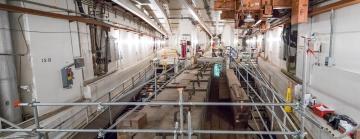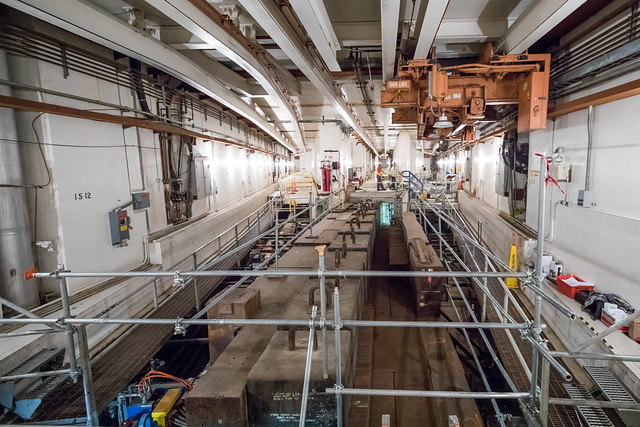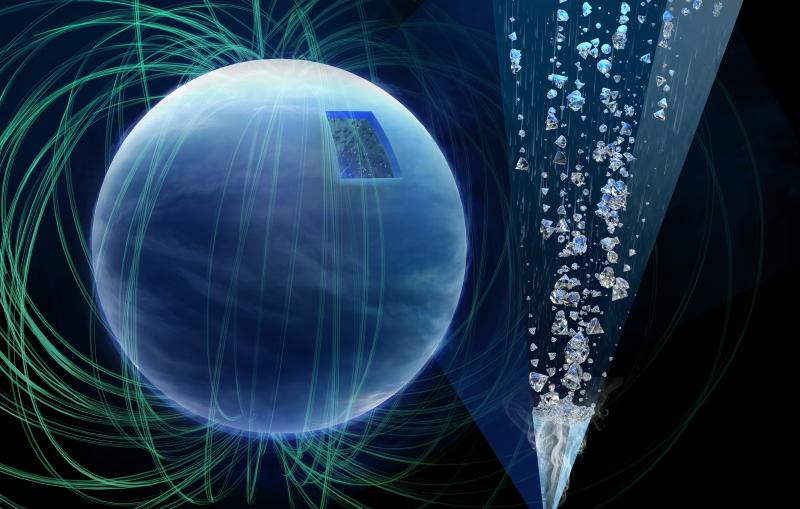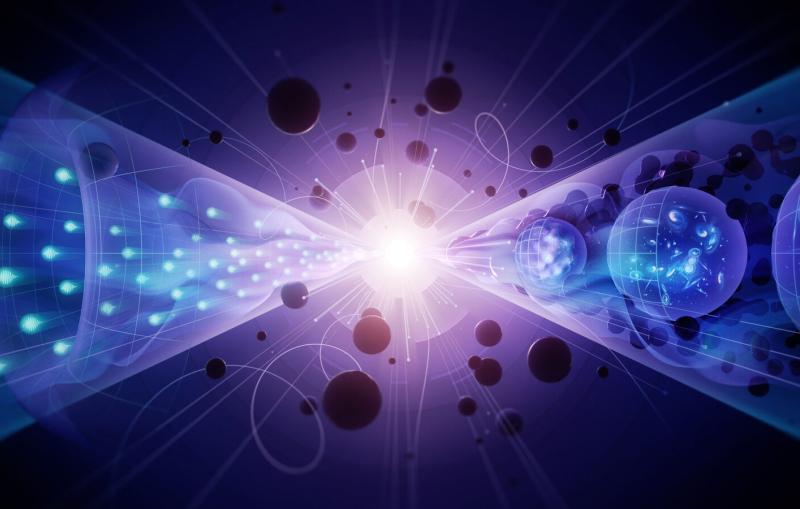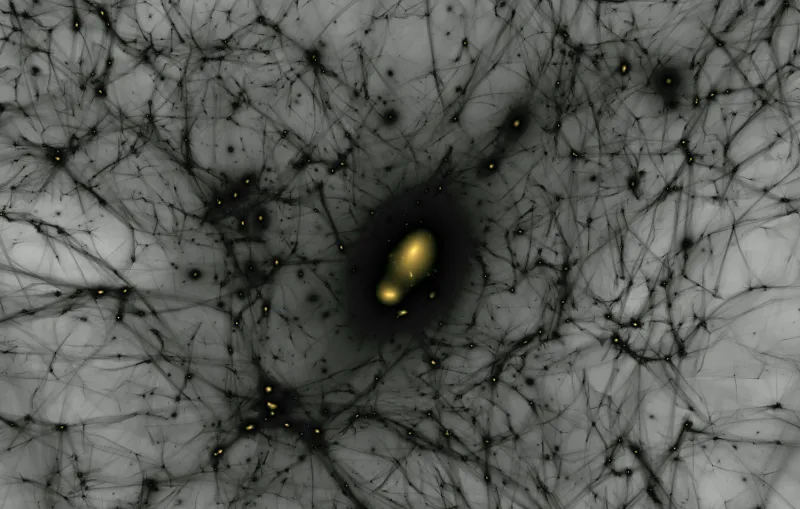SLAC’s electron hub gets new ‘Metro Map’ for world’s most powerful X-ray laser
A makeover of the historic Beam Switch Yard prepares the lab for the installation of the LCLS X-ray laser upgrade.
By Manuel Gnida
The central hub for powerful electron beams at the Department of Energy’s SLAC National Accelerator Laboratory is getting a makeover to prepare for the installation of LCLS-II – a major upgrade to the Linac Coherent Light Source (LCLS), the world’s first hard X-ray free-electron laser. LCLS-II will deliver the most powerful X-rays ever made in a lab, with beams that are 10,000 times brighter than before, opening up unprecedented research opportunities in chemistry, materials science, biology and energy research.
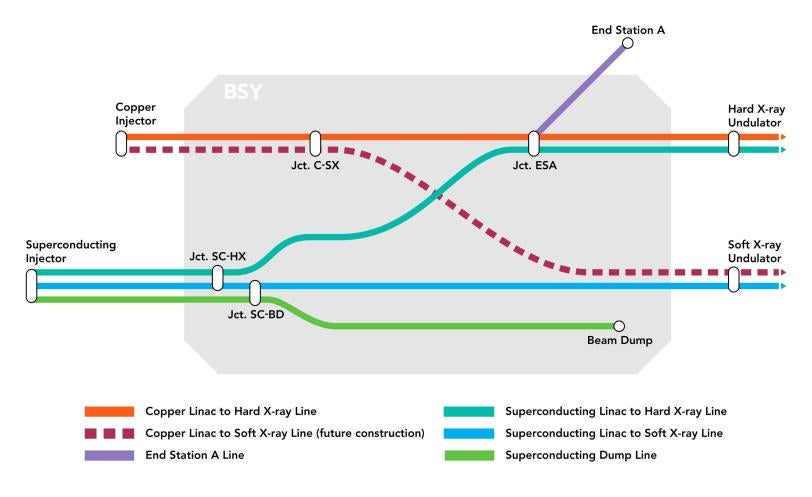
The hub, called the Beam Switch Yard (BSY), is a 600-foot-long section located at the east end of the lab’s historic 2-mile-long linear accelerator (linac), where high-energy electrons from the accelerator are redirected to experimental stations. These “electron trains” are reminiscent of the different lines of a metro system that connects various locations in a city.
“The new BSY design clears the path for LCLS-II and allows the widest suite of options for the future X-ray laser,” says SLAC’s Scott DeBarger, manager of the BSY Reconfiguration Project.
Today’s LCLS, a DOE Office of Science User Facility, uses a single electron line that starts at an electron injector at the beginning of the last third of the linac’s original copper accelerator and ends just beyond the LCLS undulator – a series of magnets that converts the electrons’ energy into ultrabright X-rays.
But the future facility will need more connections. In addition to the copper linac, LCLS-II will have a superconducting accelerator that will boost the X-ray laser’s firing rate to up to a million pulses per second. The current undulator will also be replaced with two state-of-the-art undulators for the generation of low- (soft) and high-energy (hard) X-rays. The BSY reconfiguration makes sure that both electron beams will be able to feed into either undulator, which requires four main lines.
To give researchers at LCLS-II control over the rate of X-ray pulses in their experiments, another line can steer electron trains coming from the superconducting linac into a beam dump before they reach the undulators.
A sixth line will lead to End Station A for experiments that use the extremely powerful electron beams directly.
SLAC mechanical engineer and system manager Jose Chan and his team designed the LCLS-II beamline that runs through the BSY reconfiguration area, including a vacuum chamber that ties the LCLS-II superconducting linac to the beamline from the copper linac currently used for the hard X-ray undulators.
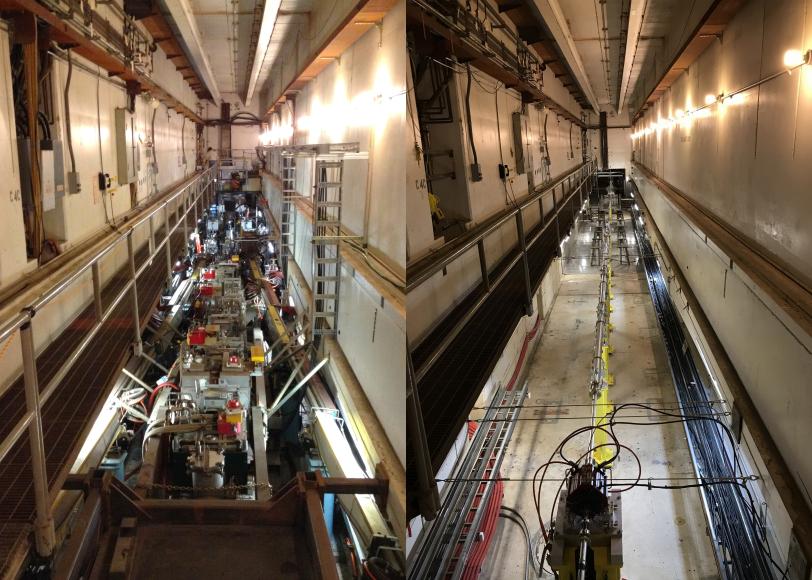
A monumental clean-up operation
To clear the path for LCLS-II, crews first had to remove all unnecessary materials from the BSY – a monumental task considering SLAC’s rich history in accelerator science and the legacy material it created.
“When experiments end, most of the old equipment is typically left in place,” says SLAC’s Mark Woodley, an optics designer involved in the BSY Reconfiguration Project. “Only the things that are in the way of new experiments are taken out.”
In its early days in the 1960s, the linac delivered electron beams to three experimental stations. There was one line going straight into the lab’s research yard. Today this line continues to the LCLS undulator. Pulsed magnets in the BSY could divert the beam into End Stations A and B via two beamlines that branched off the central line.
In 1980, two more branches were added to feed electrons and positrons, the antiparticle siblings of electrons, into the two storage rings of the PEP accelerator (PEP-II from 1999). In 1987, another two branches were needed to deliver beams to the two arms of the Stanford Linear Collider (SLC).
Most of the old materials left behind in the BSY by these experiments have now been cleared – a job that took 300 employees and subcontractors almost 24,000 hours of work in the period from December 2016 to May 2017. They removed 325 cubic yards, or about 24 tons, of material – enough to fill eight sea-land shipping containers – and more than 300,000 feet of cables.
“Considering the monumental task we had ahead of us, it’s truly impressive how well this project went,” DeBarger says. “It involved many people from inside and outside the lab, and every single one of them was absolutely needed.”
Building the future of X-ray science
After clearing out the BSY, members of the Reconfiguration Project installed a new beamline that runs from the copper linac to the current LCLS undulator. In parallel, the system to extract electrons for the End Station A line was put in place by another project team.
“We also installed the very first LCLS-II beam pipe at the end of a ‘muon shield’ that is constructed of 5- and 10-ton steel blocks and shields the beam transport hall downstream of the BSY, allowing access while beams are tuned in the BSY,” says Dean Hanquist, control account manager on Chan’s team.
“In the end, we had to make sure that everything works properly again for LCLS, which has now resumed its experimental program,” says BSY Area Physicist Tonee Smith. “For example, all of the magnets used in the beamline to focus the electron beam and make small corrections to it were refurbished, and we had to remeasure and test them.”
The remaining beamlines and junctions will be installed during a yearlong LCLS downtime, which will start in the summer of 2018. Once completed, the new BSY “metro system” will be ready to transport electron trains to the new X-ray laser facility, where they will power groundbreaking X-ray science for years to come.
SLAC is a vibrant multiprogram laboratory that explores how the universe works at the biggest, smallest and fastest scales and invents powerful tools used by scientists around the globe. With research spanning particle physics, astrophysics and cosmology, materials, chemistry, bio- and energy sciences and scientific computing, we help solve real-world problems and advance the interests of the nation.
SLAC is operated by Stanford University for the U.S. Department of Energy’s Office of Science. The Office of Science is the single largest supporter of basic research in the physical sciences in the United States and is working to address some of the most pressing challenges of our time.
